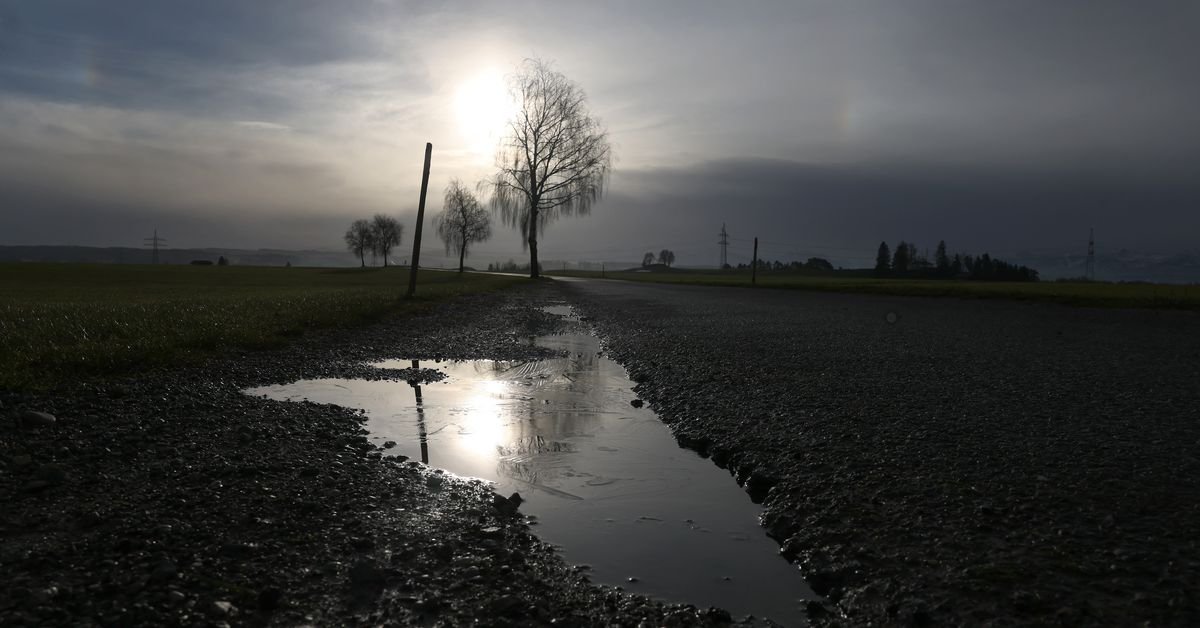[ad_1]
Scientific advisers to the European Commission are calling for a moratorium across the EU on efforts to artificially cool Earth through solar geoengineering. That includes controversial technologies used to reflect sunlight back into space, primarily by sending reflective particles into the atmosphere or by brightening clouds.
Proponents argue that this can help in the fight against climate change, especially as planet-heating greenhouse gas emissions continue to climb. But small-scale experiments have triggered backlash over concerns that these technologies could do more harm than good.
Experiments have triggered backlash over concerns that these technologies could do more harm than good
There’s “insufficient scientific evidence” to show that solar geoengineering can actually prevent climate change, says the opinion written by the GCSA.
“Given the currently very high levels of scientific and technical uncertainty … as well as the potential harmful uses, we advocate for a moratorium on all large-scale [solar geoengineering] experimentation and deployment,” writes the EGE in the second highly anticipated opinion.
Solar geoengineering merely attempts to tackle “the symptoms rather than the root causes of climate change,” according to the GCSA. Greenhouse gas emissions including carbon dioxide from fossil fuels are heating the planet. Trying to artificially cool Earth does nothing to stop that pollution from building up, nor does it treat other serious consequences like oceans becoming more acidic as they absorb excess CO2. It could also cause unintended problems, including changing rainfall patterns or impacting food production and solar energy generation, the GCSA notes.
The tactic that’s gained the most attention so far involves mimicking the way volcanic eruptions temporarily cool the planet by spewing sulfur dioxide into the stratosphere, producing a reflective haze. But using sulfur dioxide can also be considered a pollutant that might irritate people’s lungs, lead to acid rain, and potentially rip open the Antarctic ozone hole.
The experiments were likely too small to have any major impact on the climate. Nevertheless, the company tried to sell “cooling credits” at $10 per gram of sulfur dioxide to anyone interested in trying to offset their carbon emissions. The GCSA’s opinion says the European Commission ought to “oppose” the use of cooling credits from solar geoengineering.
Facing the prospect of more rogue experiments, lawmakers are under pressure to craft stronger international rules. The governing body of the United Nations Convention on Biological Diversity adopted restrictions on large-scale geoengineering in 2010, but it exempts small-scale experiments. Now, the European Commission’s scientific advisers recommend a more explicit EU-wide moratorium. It also recommends setting the stage for a new international treaty on solar geoengineering and says that the EU should advocate against deploying such technologies globally for the “foreseeable future.”
There have been some cautious efforts to fund legitimate research into solar geoengineering, though likely confined to labs and computer models for now. Harvard recently canceled plans to conduct an outdoor test flight in Sweden after facing opposition from Indigenous Saami leaders who said they weren’t consulted about the experiment. The European Commission should assess new research on solar geoengineering every five to 10 years, its scientific advisers say.
“These technologies do show some promise, but they are far from mature,” Ekaterina Zaharieva, commissioner for startups, research, and innovation, said in a statement today. “Research must continue, but the opinion of the European Group on Ethics shows research must be rigorous and ethical, and it must take full account of the possible range of direct and indirect effects.”
[ad_2]
Source link





